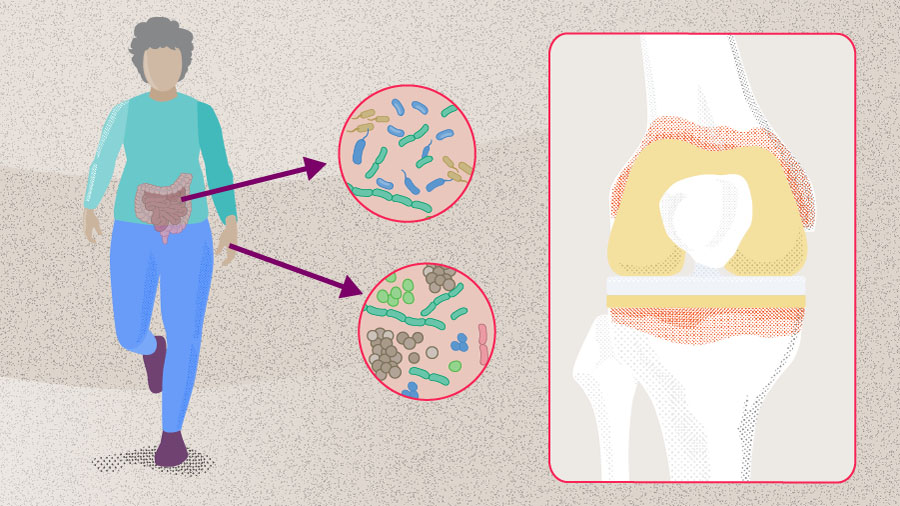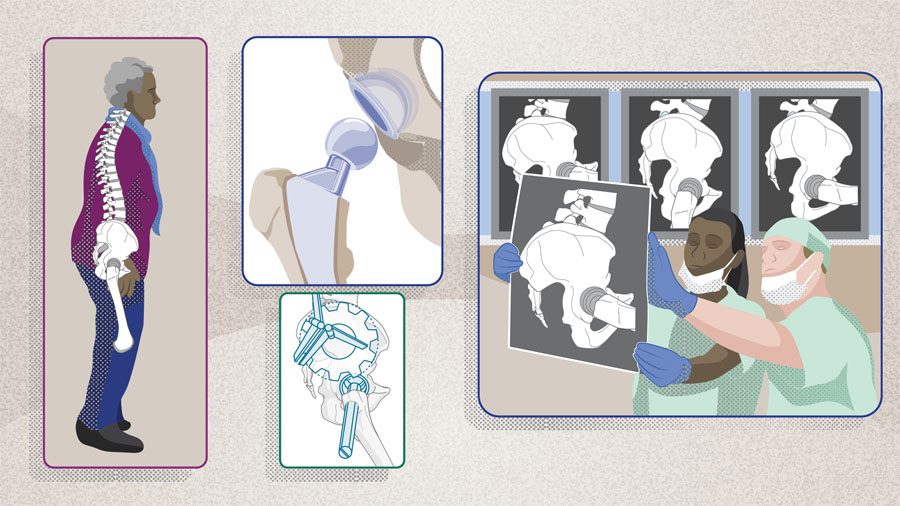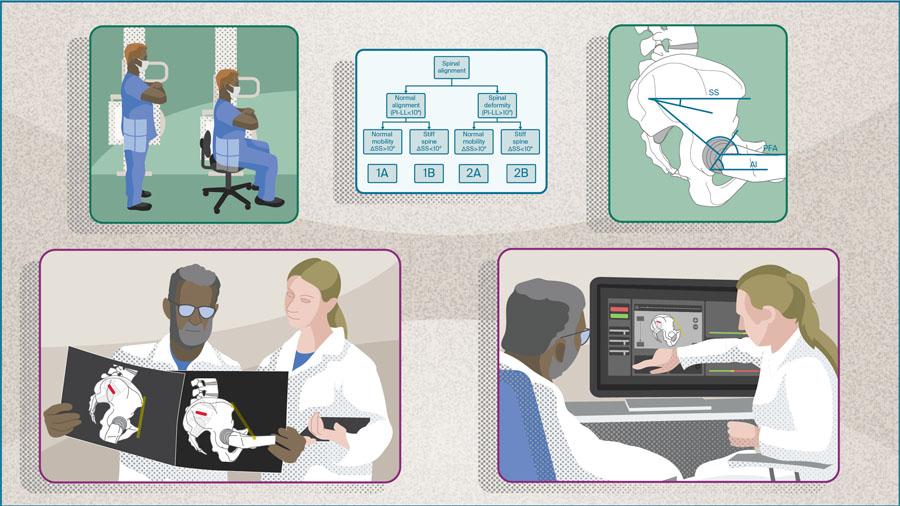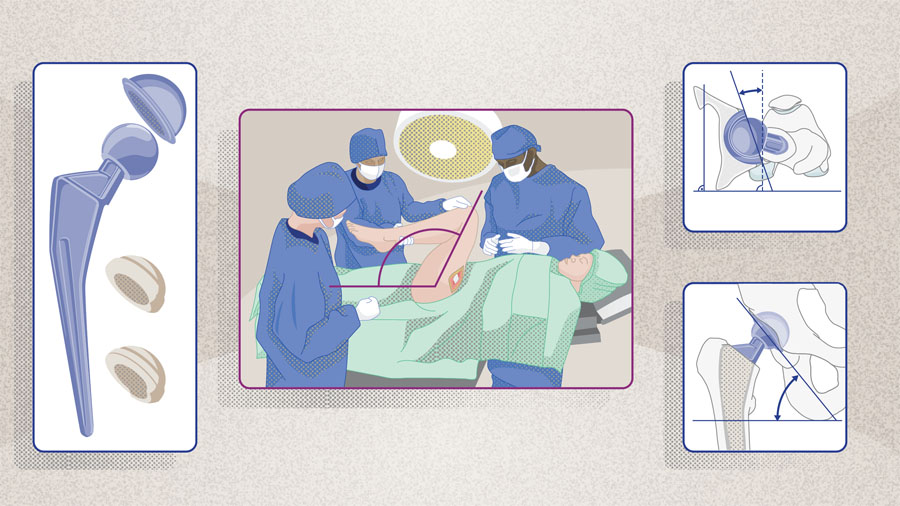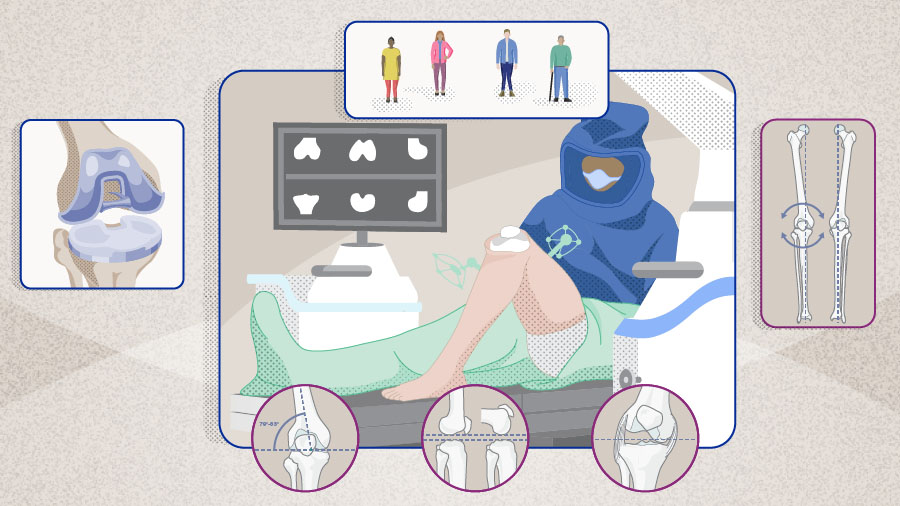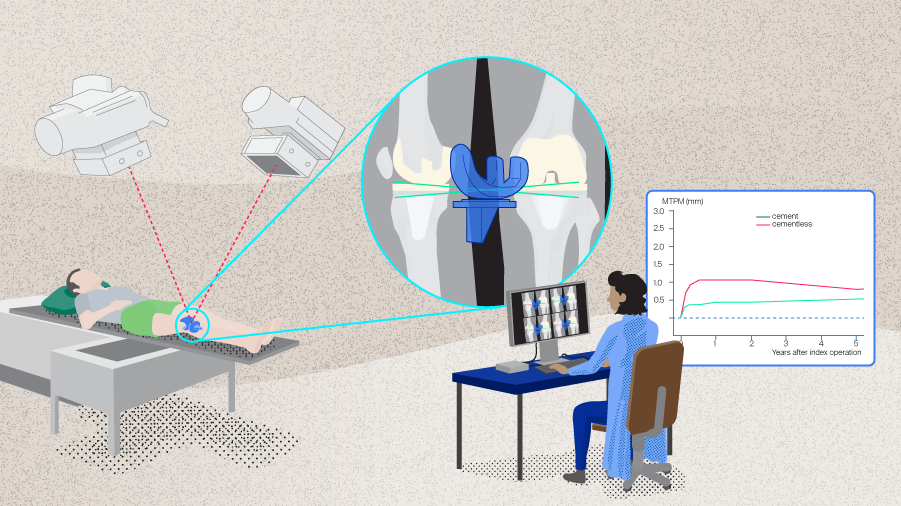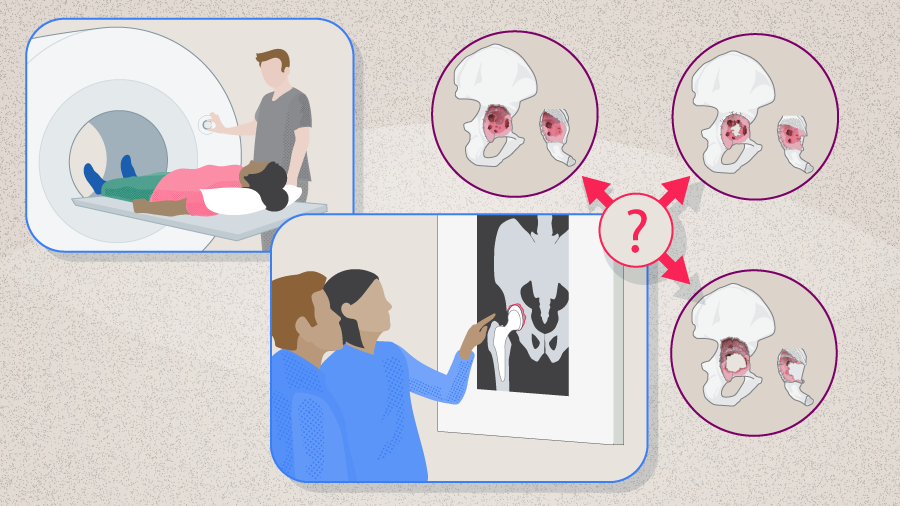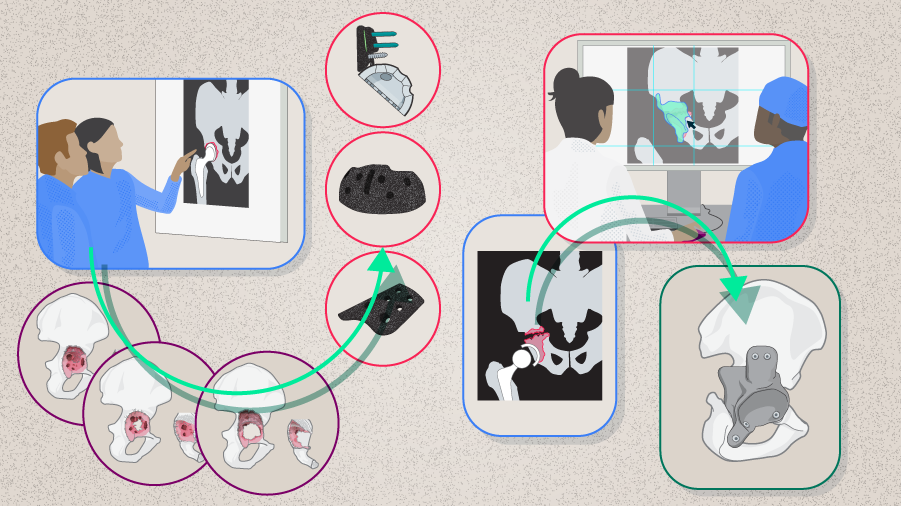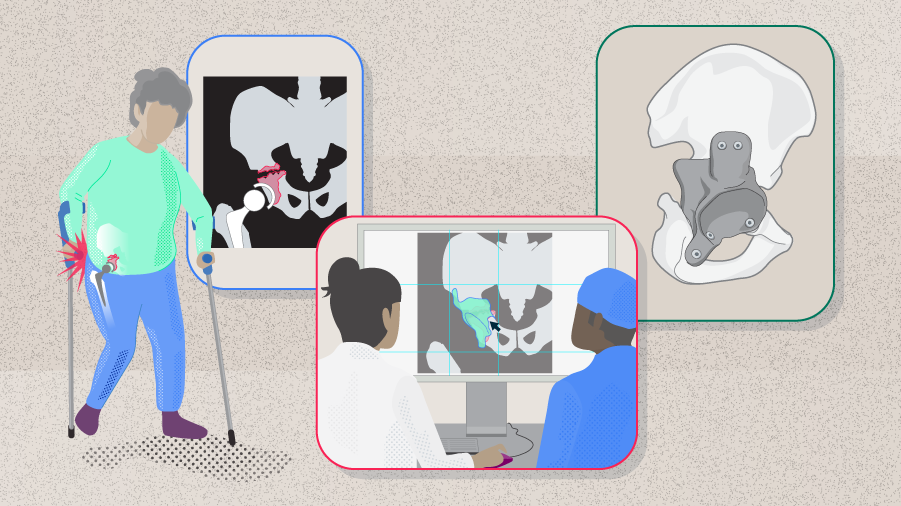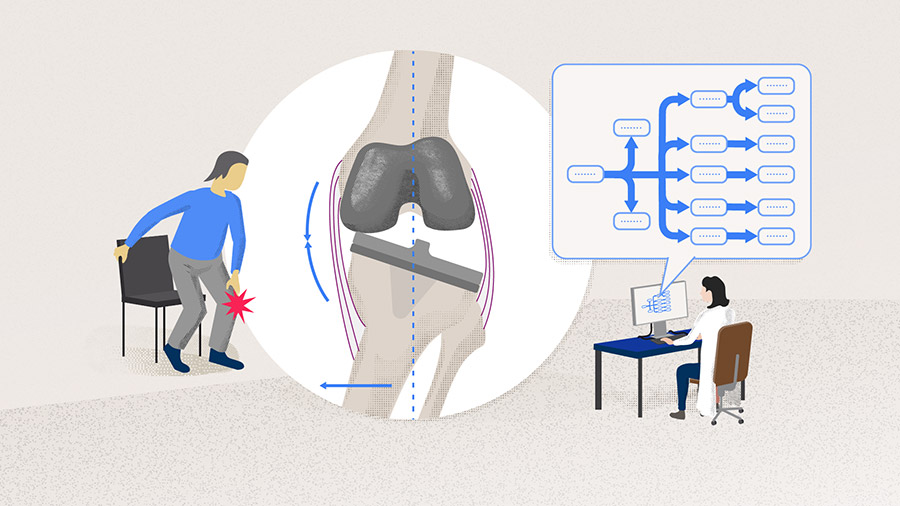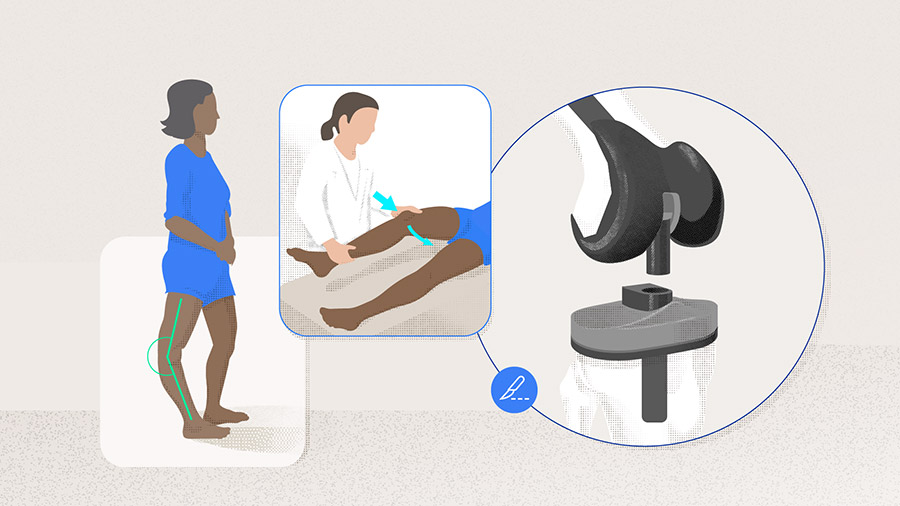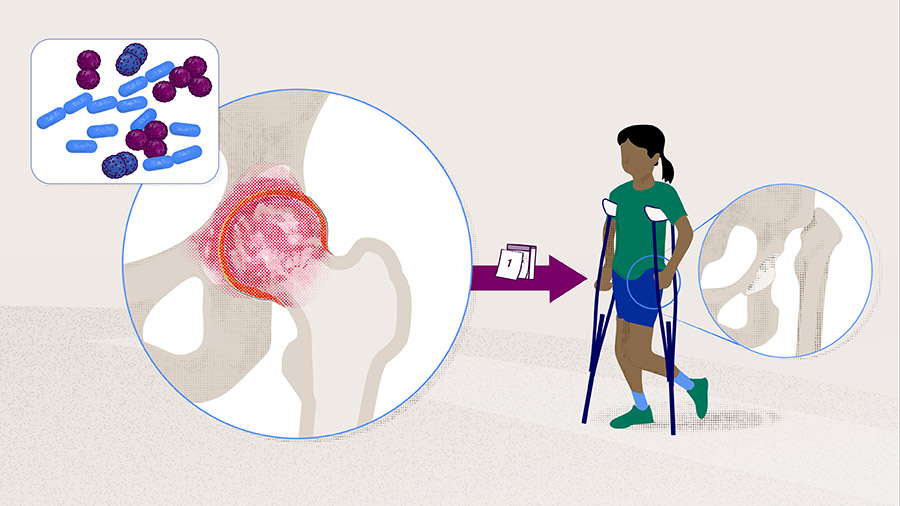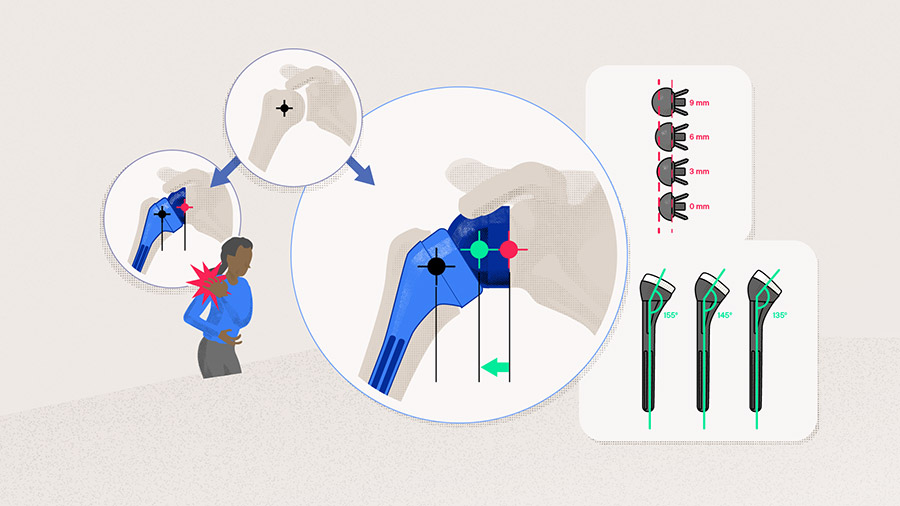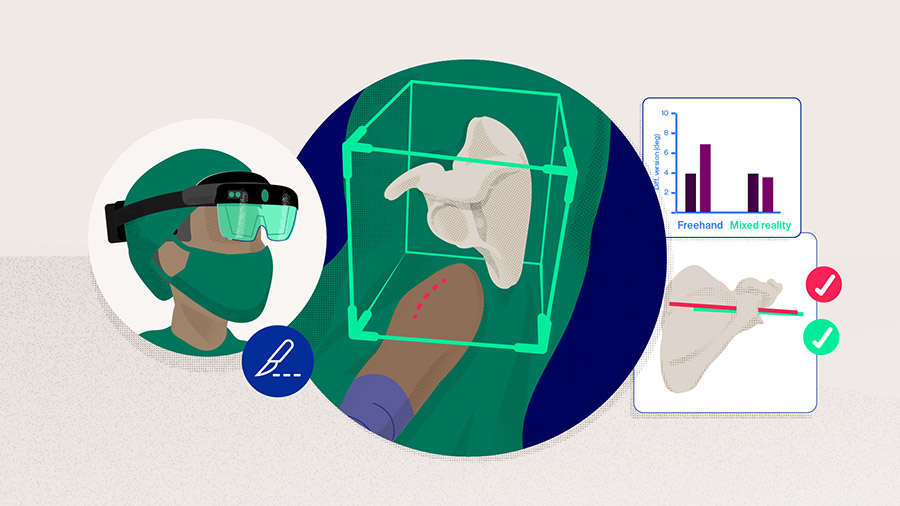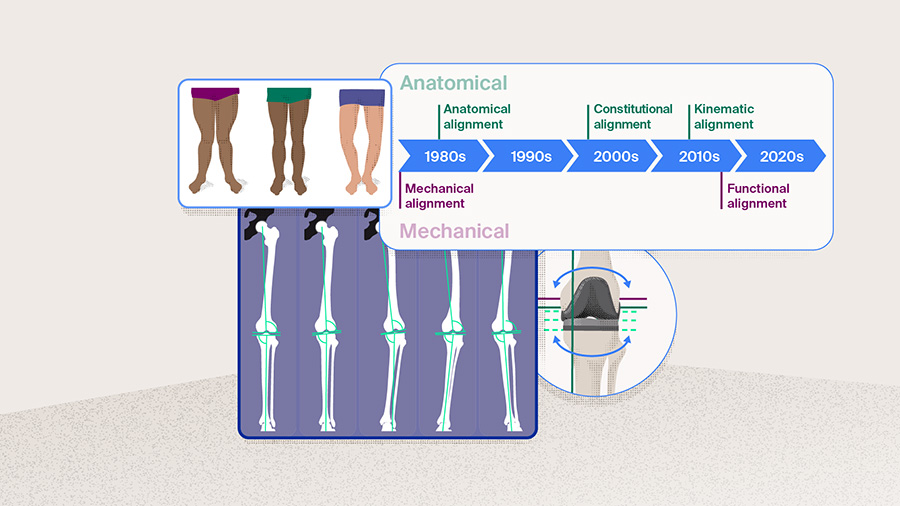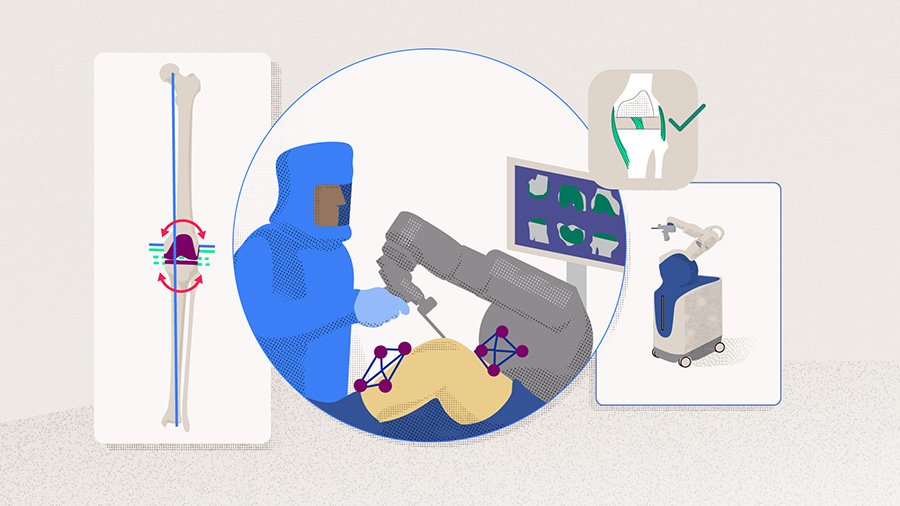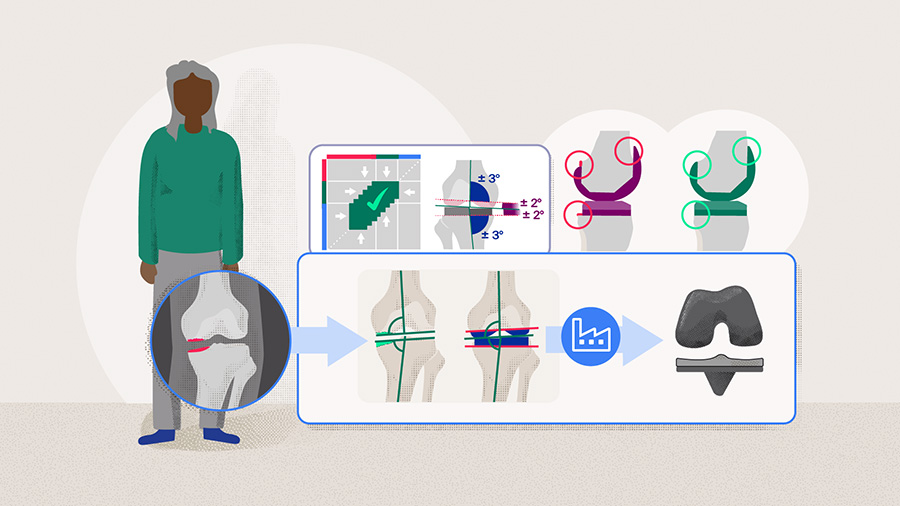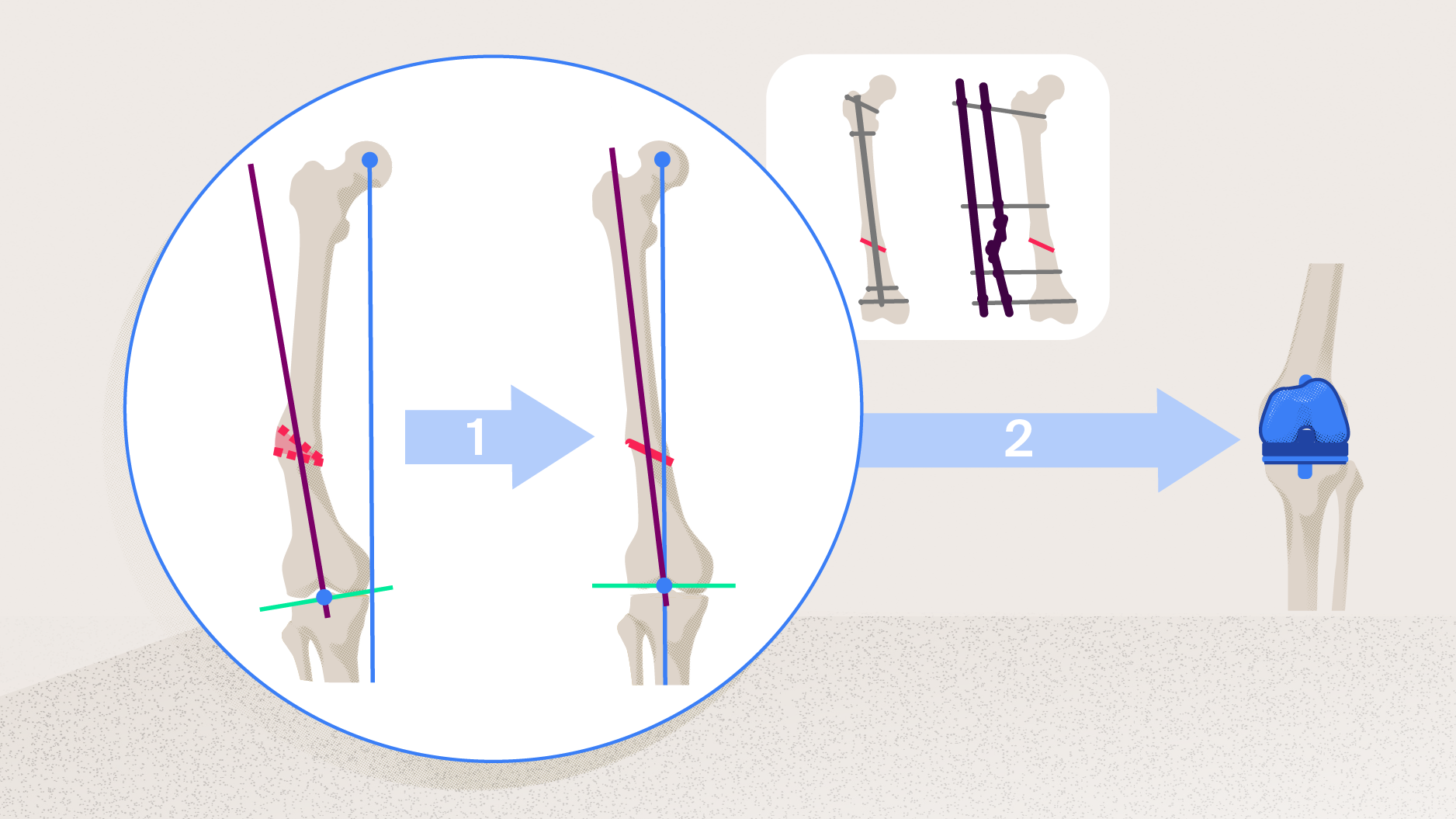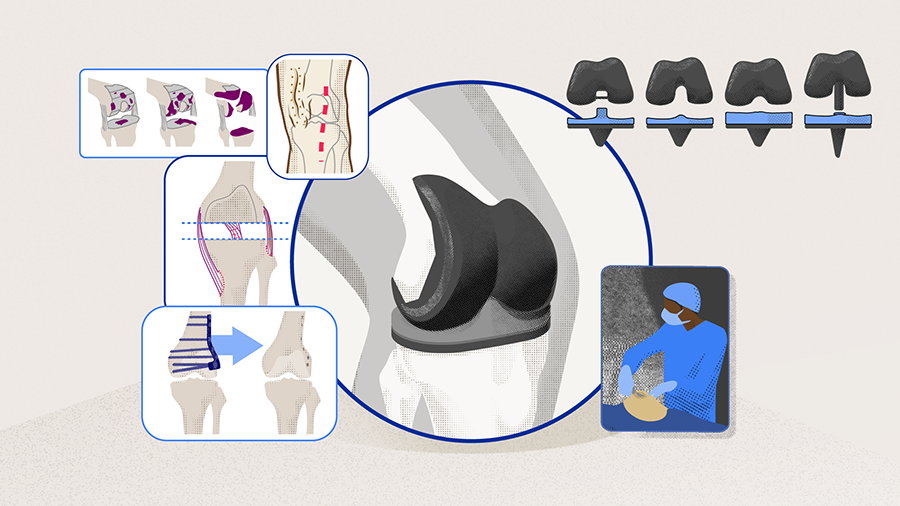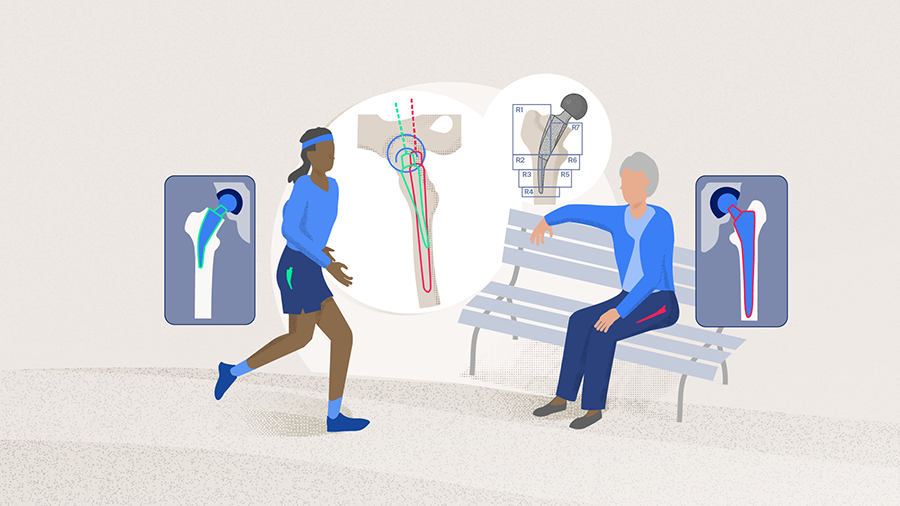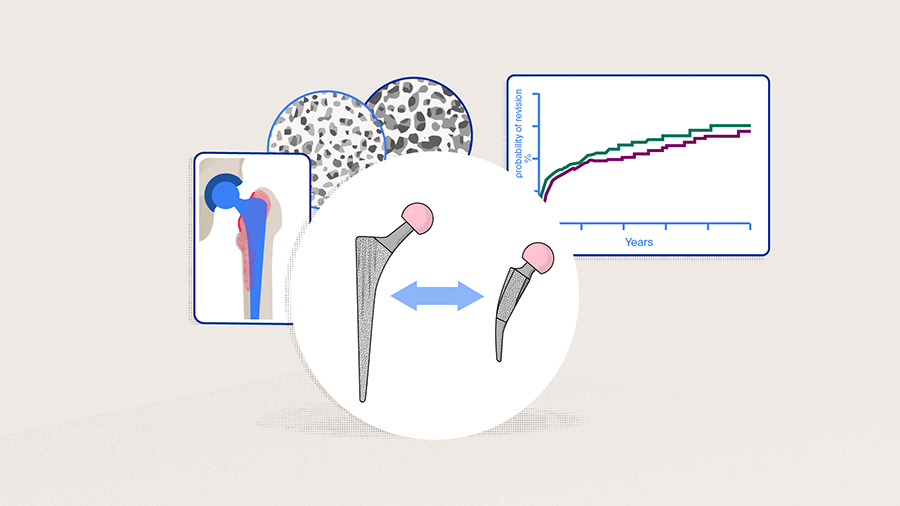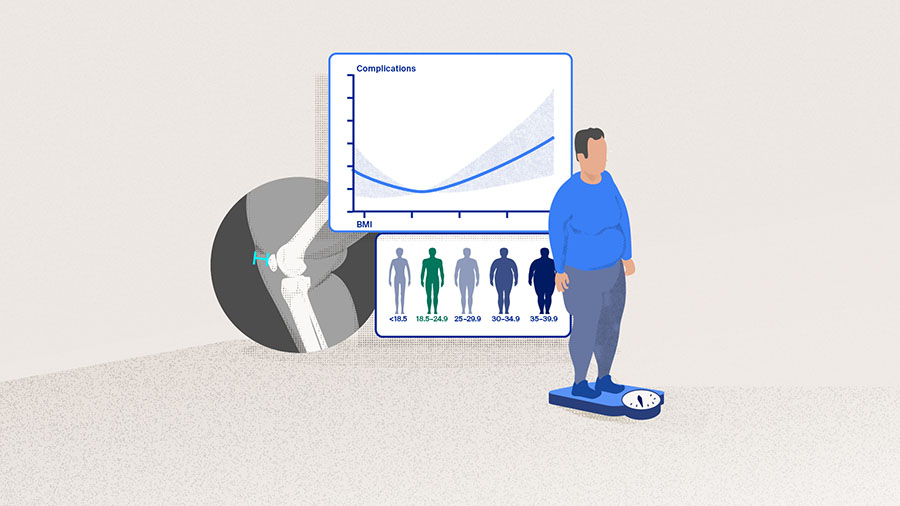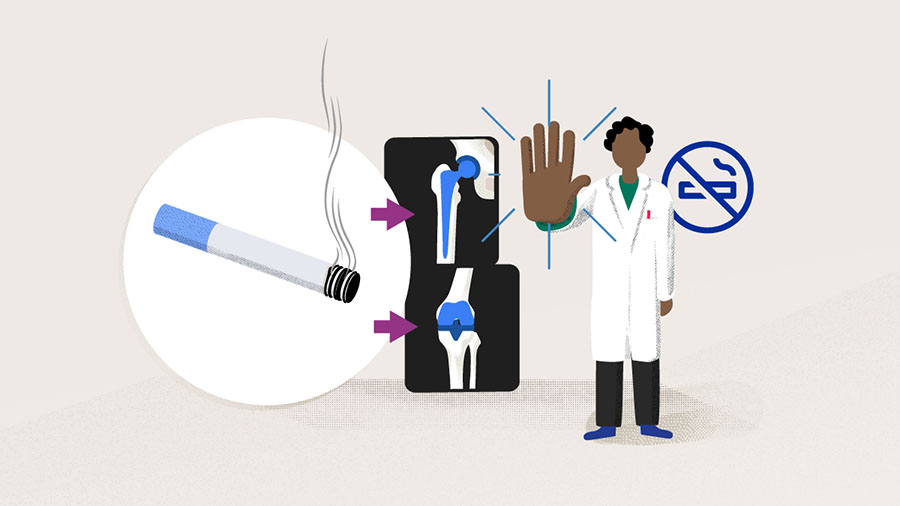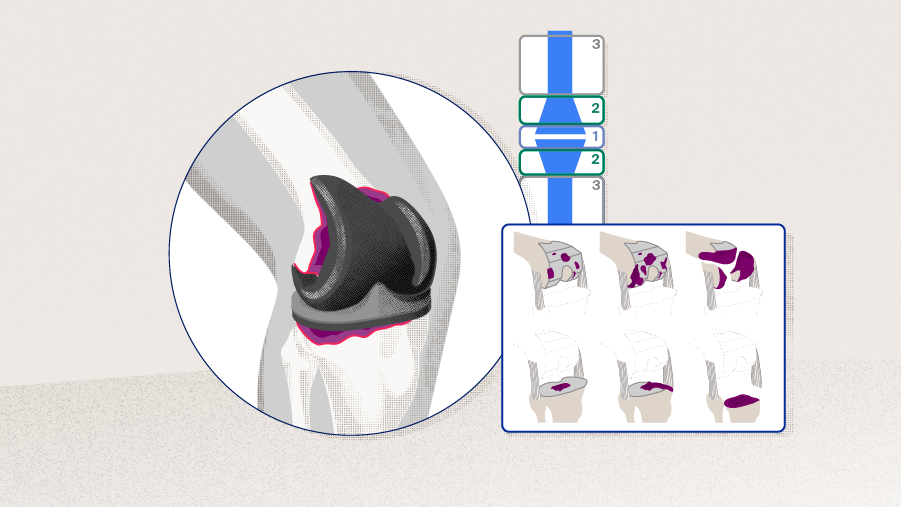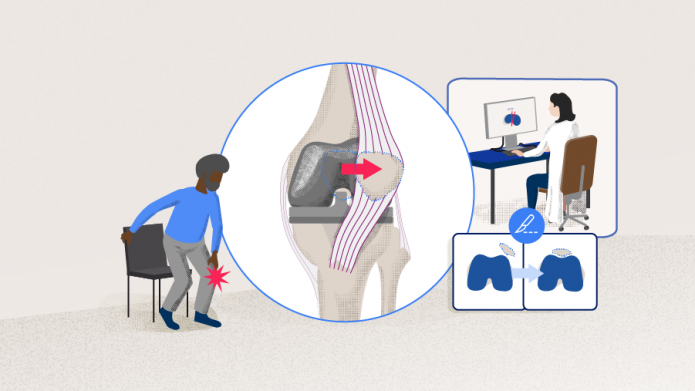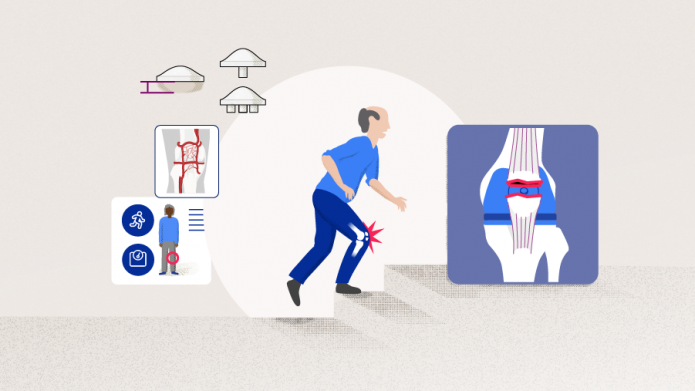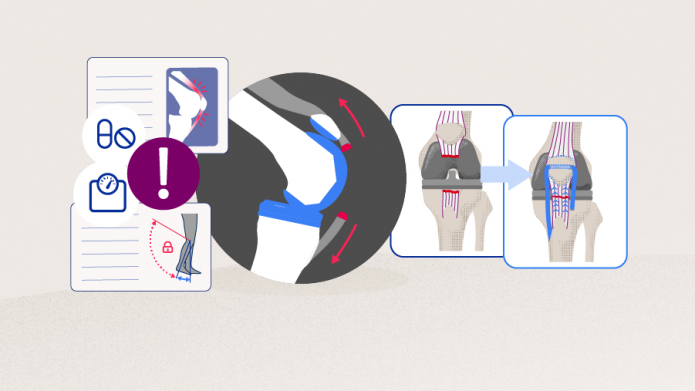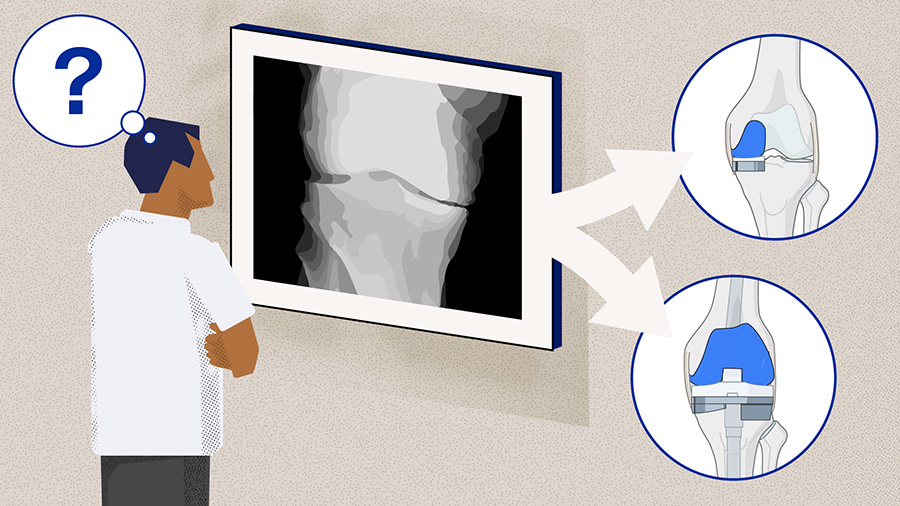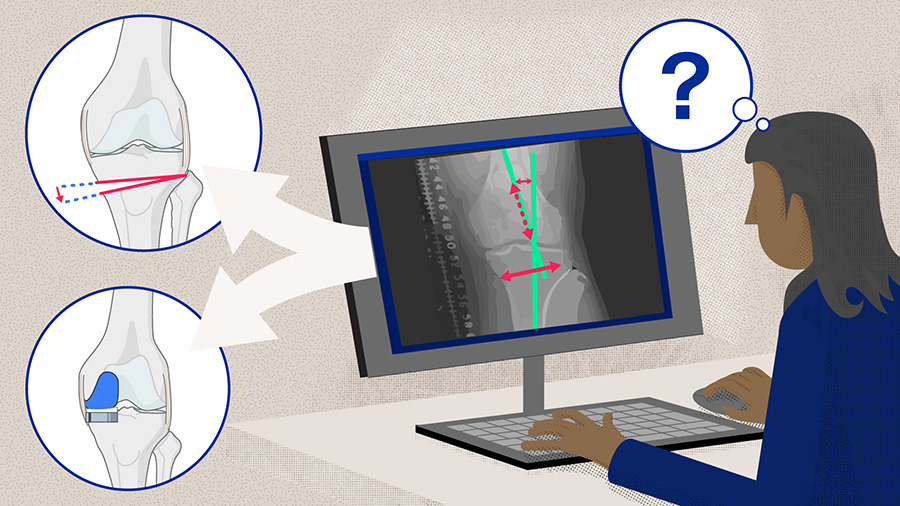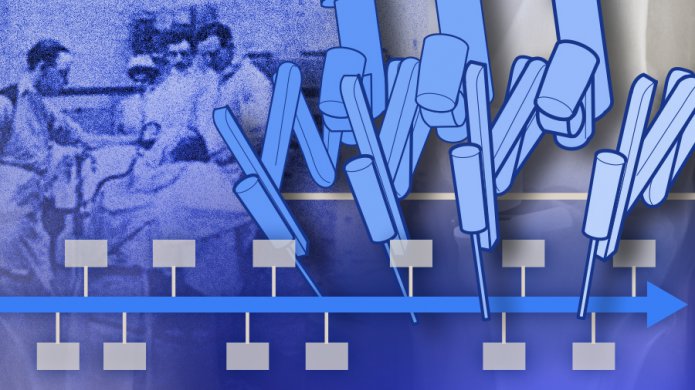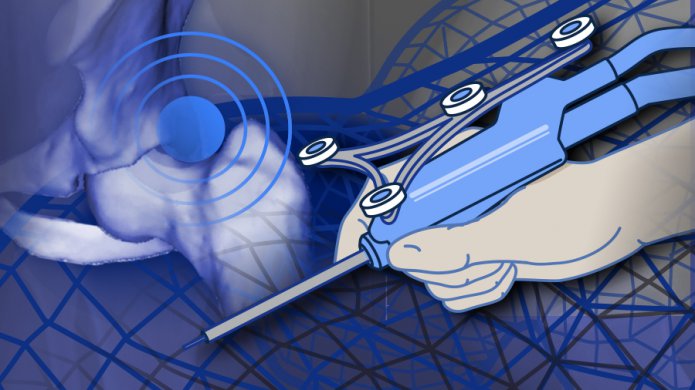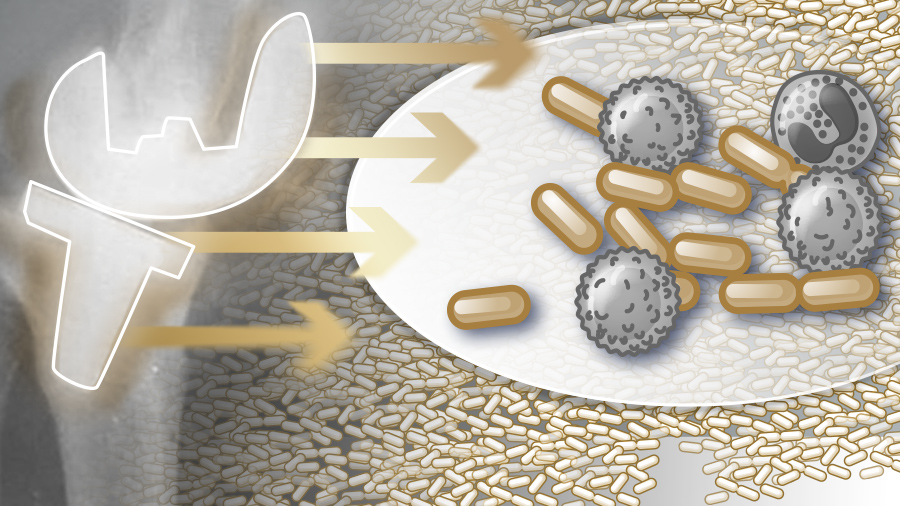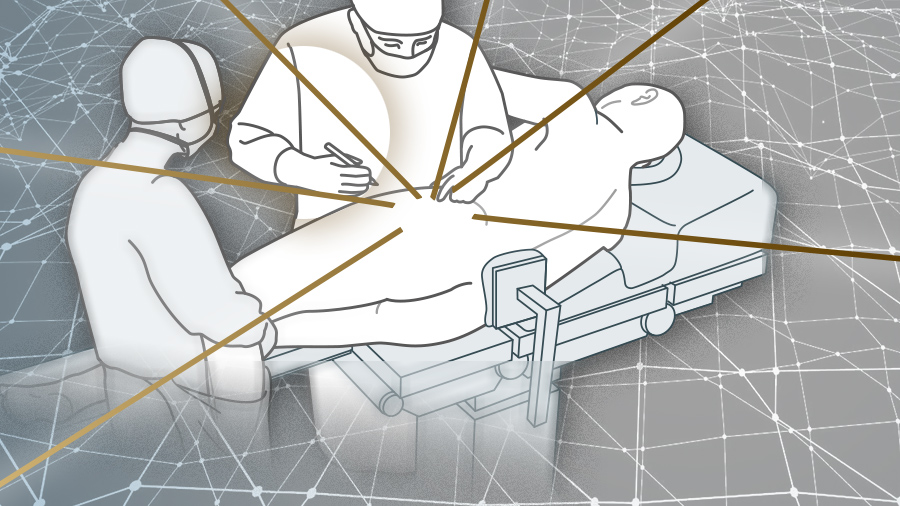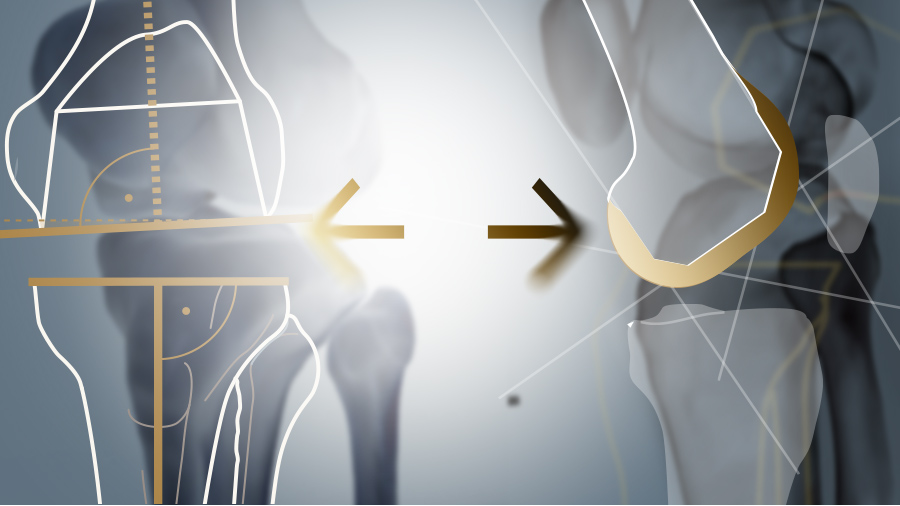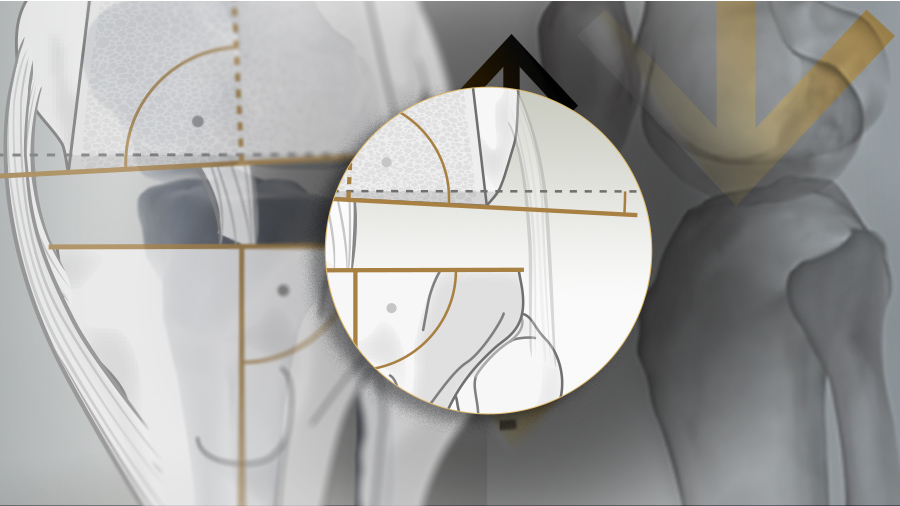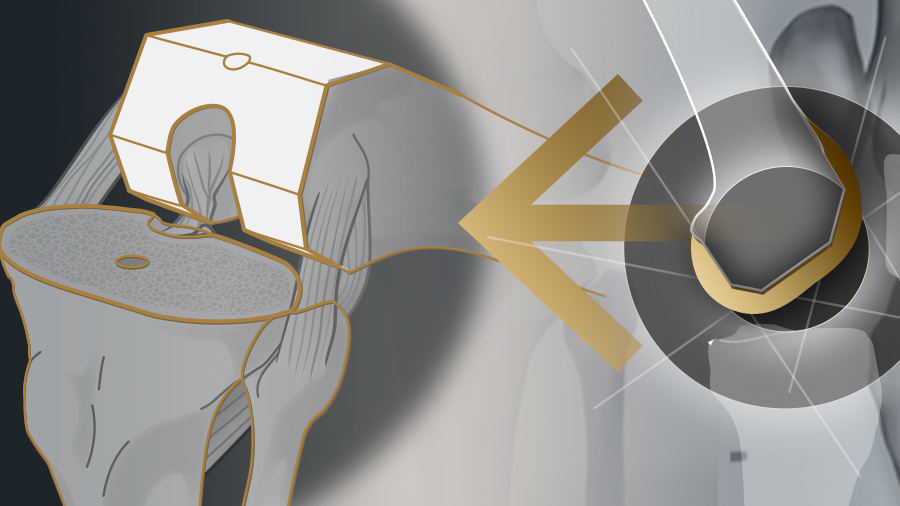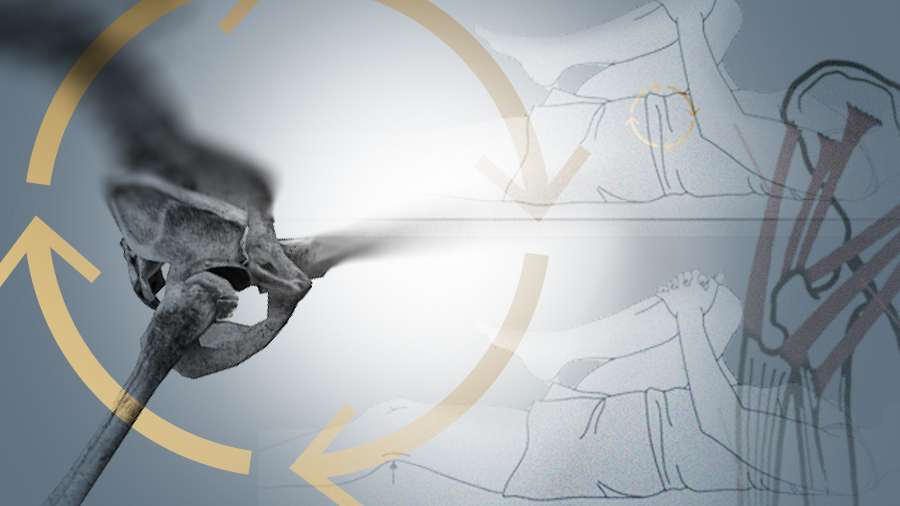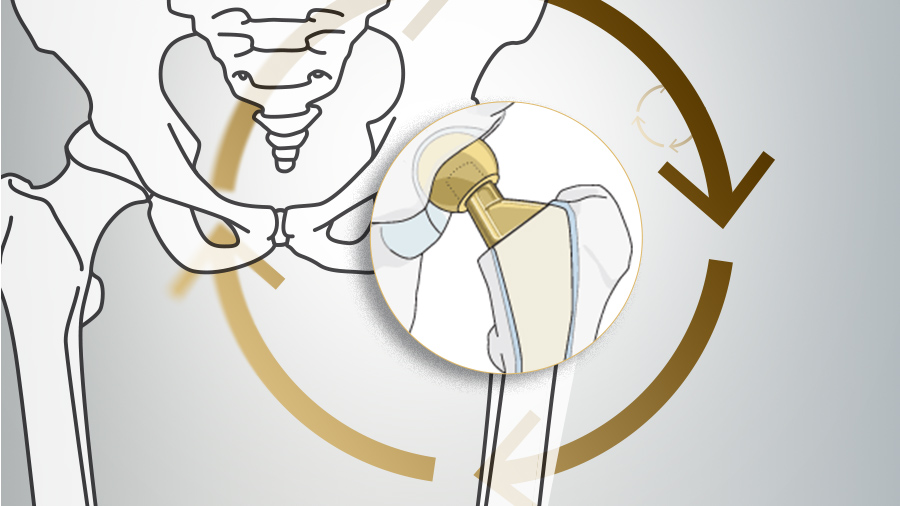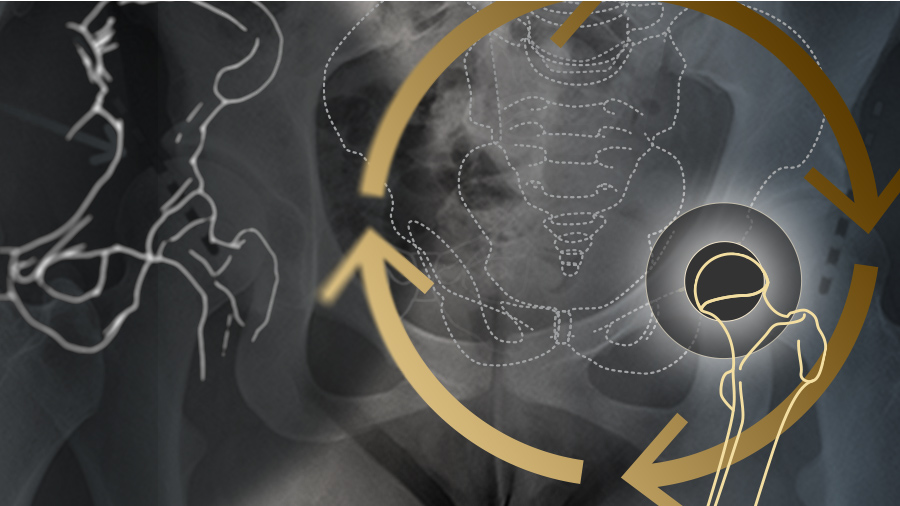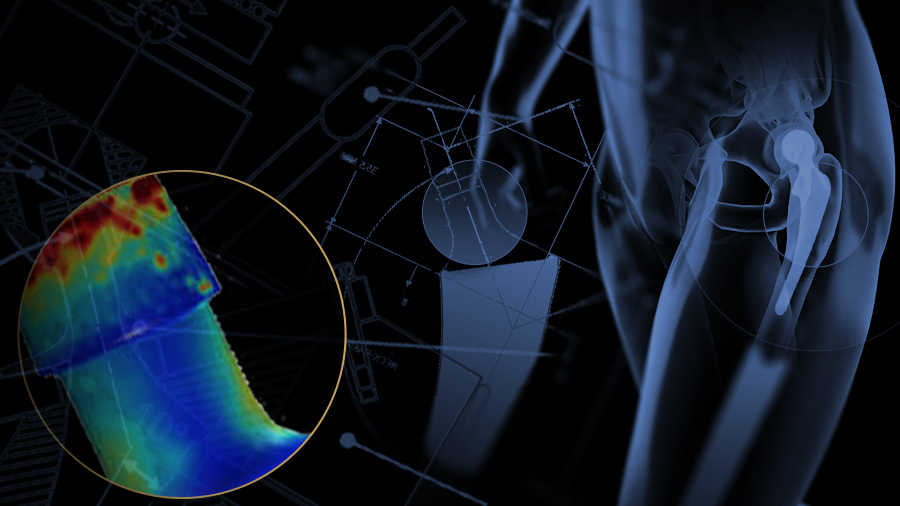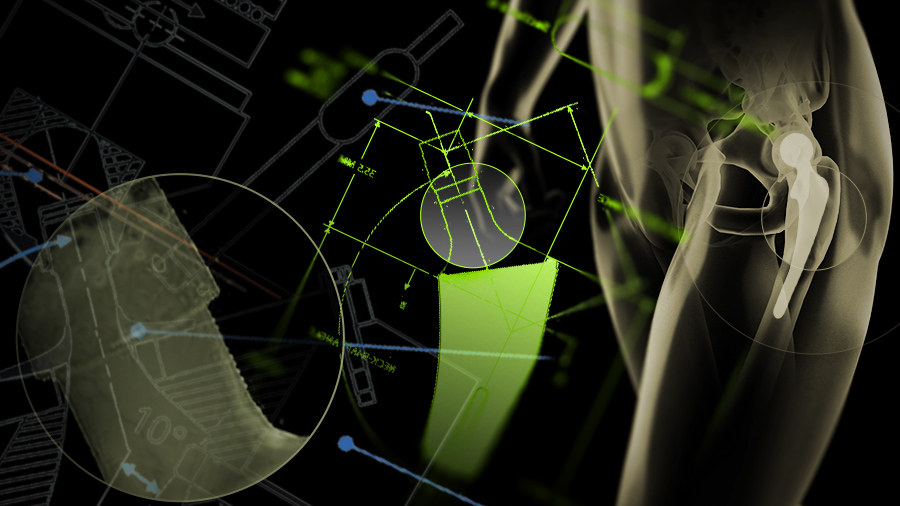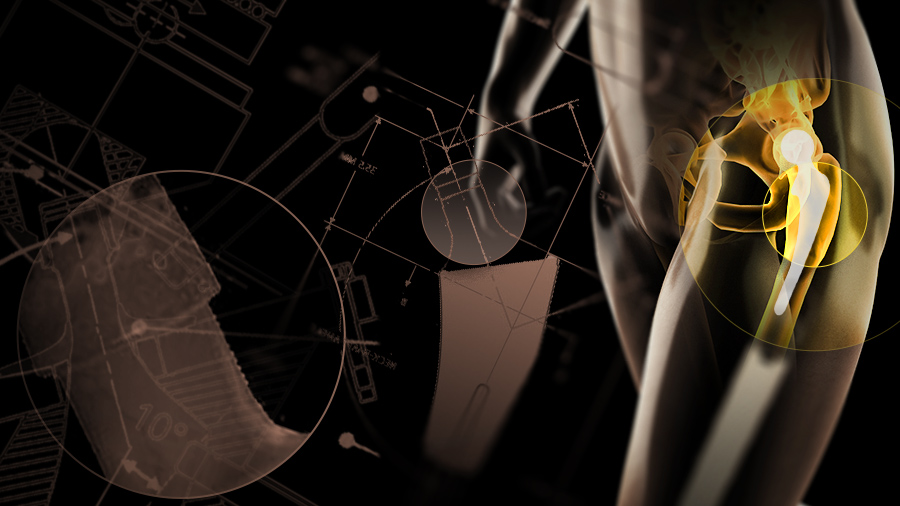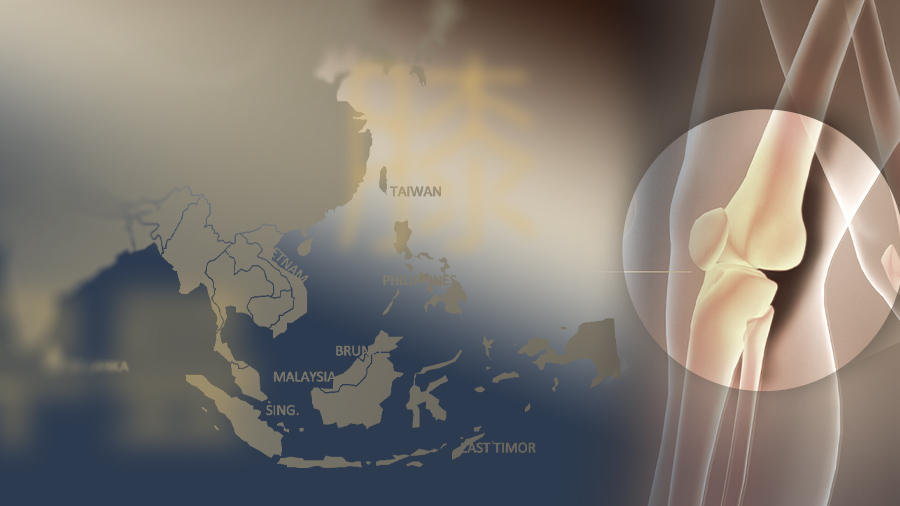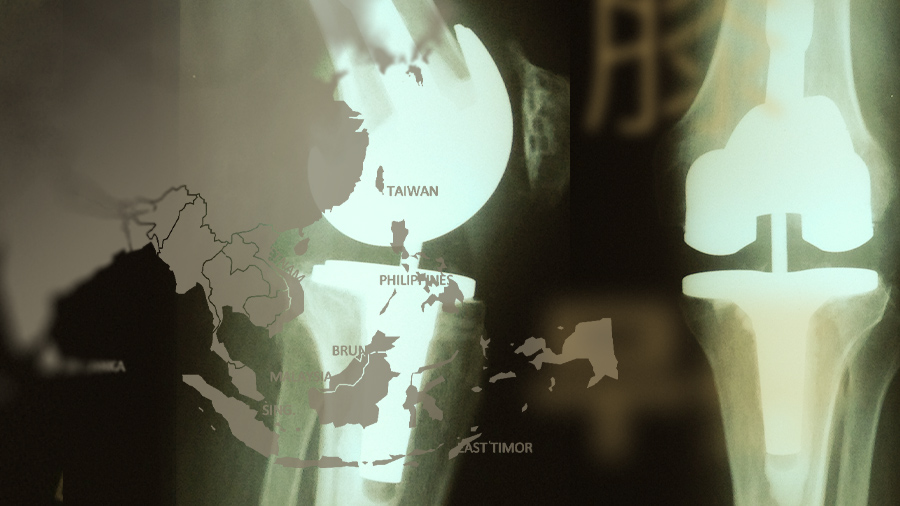Scientific articles
Take a comprehensive deep dive into specific clinical topics.
Our clinical experts disseminate their knowledge to orthopedic surgeons in periodic publications. They include a blend of clinical tips and literature digest to help surgeons keeping up with the current best clinical practice and the research landscape in specific reconstruction topics. Take a comprehensive deep dive into specific clinical topics.
Read the full articles with your AO login.
If you don't have an AO login yet, create a profile within seconds and get free access to our publications. In your profile, make sure you have checked AO Recon as one of your interests.
Get notified when new articles are online.
Sign up here for our free newsletter to be the first to hear about new publications and related webinars.
Volume 11, Number 3 | December 2025
Update on periprosthetic joint infection
Periprosthetic joint infection prevention, diagnosis, and the role of the human microbiome
Periprosthetic joint infection (PJI) is a devastating complication of total joint arthroplasty (TJA) with often poor outcomes. Many are familiar with diagnosis and treatment of PJI, yet prevention of PJI is gaining importance, not only for the surgeon but also for the patient. There is a growing shift in clinical focus emphasizing prevention over treatment, which is driven by an increased awareness of risk factors, their modification, and the significant impact of PJI on patient morbidity and mortality. Periprosthetic joint infection can also present in a variety of ways, prompting ongoing questions about the most effective methods for diagnosis, questions that may have shaped the evolution of diagnostic criteria. Recent advances in diagnostic testing, along with emerging insights into the human microbiome and its role in maintaining health by modulating immune responses and protecting against infection, have led to exciting updates in our understanding and management of PJI.
In this series of articles, Mustafa Citak (Helios ENDO-Klinik Hamburg, Hamburg, Germany), Armita Armina Abedi (Department of Orthopaedic Surgery and Traumatology, Copenhagen University Hospital, Bispebjerg; Department of Clinical Medicine, Faculty of Health and Medical Sciences, University of Copenhagen, Denmark), Jason Jennings (Department of Mechanical and Materials Engineering, University of Denver, Colorado; Department of Physical Therapy, University of Delaware, Delaware), and Kristen Barton (Midwest Orthopaedics at Rush, Rush University Medical Centre, Chicago; Department of Physical Therapy, Western University, Canada) lead us through the ten steps to infection prevention, the latest PJI diagnostic criteria, and the emerging role of gut microbiome dysregulation, endogenous microbial sources of infection, and emerging strategies for prevention and patient optimization.
Volume 11, Number 2 | July 2025
The spinopelvic relationship in total hip arthroplasty
Spinopelvic parameters may influence patient outcomes: how to tackle the multifactorial temperament of hip implant stability
As a well-established surgical procedure, total hip arthroplasty (THA) can dramatically help improve the mobility and quality of life for patients enduring a diseased or damaged hip joint. Despite the proven clinical safety and performance of THA, postoperative dislocation and impingement remain as relatively common risks. Surgical decisions in THA classically involve preoperative patient evaluation in the supine position with consideration only of the hip as an isolated unit, without incorporation of the spine. Growing clinical evidence suggests the relationship between hip and spine mechanics may have a critical impact on postoperative stability, particularly in patients with altered mobility such as abnormal stiffness of the spine. Pioneering research aims to increase this awareness of the hip-spine relationship as a combined unit that may influence surgical decisions and resulting outcomes.
In this series of articles, Nathanael D Heckmann (Keck School of Medicine, University of Southern California, Los Angeles, California, United States), Jonathan Vigdorchik (Hospital for Special Surgery, Uniondale, New York, United States), and George Grammatopoulos (The Ottawa Hospital, University of Ottawa, Ottawa, Ontario, Canada) set the stage for integrating THA and the spinopelvic relationship via the implementation of preoperative and intraoperative checks and decisions. Preoperatively, strategies include a sitting and standing radiographical analysis of patient-specific spinopelvic factors to determine optimal implant features and orientations. Intraoperatively, the information gained from preoperative evaluation can be applied and verified with strategies such as the use of trial acetabular liners and tests for intraoperative range of motion. With these gained insights and acuity on the spinopelvic relationship, the aim is to decrease the risk of instability and ultimately improve patient outcomes, including care for high-risk patients with altered spinopelvic mobilities.
Volume 11, Number 1 | May 2025
Robotics in total knee arthroplasty
Using personalized alignment philosophies and robotic-assisted TKA to improve patient outcomes
Modern total knee arthroplasty (TKA) with the latest generation of haptic-controlled robotic arm-assisted technology started around a decade ago. Since then, there has been a rapid evolution of robotic systems, which have become well integrated into orthopedic surgery. The main aim is to find ways to better plan TKAs to provide better outcomes for patients. This can be achieved through knee phenotyping, an important philosophy in TKA. Increased technological advancements offered by robotic-assisted systems coupled with alignment concepts means that TKA is moving towards a more personalized experience.
In this series of articles, Michael T Hirschmann from Kantonsspital Baselland, Bruderholz, Switzerland, Fares Haddad, University College London and University College London Hospitals UK, and Sébastien Lustig from Lyon North University Hospital—Hospice Civils de Lyon, Lyon, France, present an overview of robotic-assisted TKA. Here, they focus on knee phenotyping and personalized alignment philosophies in TKA, present recently published early to mid-term outcome data of robotic-assisted TKAs, as well as data on accuracy. Additionally, they take a closer look at patient-reported outcomes, in particular patient satisfaction.
Volume 10, Number 3 | November 2024
Total hip arthroplasty after acetabular fractures
Evaluating acute and delayed total hip arthroplasty as a treatment for acetabular fractures
Acetabular fractures in elderly patients are increasing and the failure rate of open reduction and internal fixation as a treatment for these fractures in this population is high. Furthermore, the fracture pattern occurring in the elderly is different to that occurring in the younger population. Total hip arthroplasty (THA) as a treatment for acetabular fractures can be used in different settings, either as an immediate intervention or after failure of initial treatment or when the acetabular fracture was left untreated.
In this series of articles, Rodrigo Pesantez from the Universidad de los Andes Medical School and Colegio Mayor de Nuestra Señora del Rosario, Bogotá, Colombia, Ashok S Gavaskar from Rela Institute and Medical Centre, Chennai, India, and Ramesh K Sen from the Institute of Orthopedic Surgery at the Max Hospital, Mohali, India, present acute and delayed THA as a treatment for acetabular fractures. Here, they discuss indications and outcomes, examine the surgical techniques, bone grafting options, and augmentation methods for both acute THA as well as THA in the setting of neglected acetabular fractures.
Volume 10, Number 2 | July 2024
Cementless knee replacement
A closer look at the current trends in total knee arthroplasty fixation
The use of cemented versus cementless fixation in total knee arthroplasty (TKA) has been the subject of ongoing debate for over a decade. Early use of cementless TKA was met with mixed results. However, technology has advanced and new generations of cementless TKA designs are now starting to show good short- to midterm outcomes. These modern designs, supported by radiosterometric analysis studies, hold promise in extending the lifespan of TKA implants.
In this series of articles, Gerard A Sheridan from the Department of Orthopaedic Surgery, University of Galway, Galway, Ireland, Bassam Masri from the Department of Orthopaedics, University of British Columbia, Vancouver, Canada, and David F Dalury from the University of Maryland St Joseph Medical Center, Baltimore, Maryland, USA will lead us in examining TKA registry data from the last 10 years, assessing mid-term outcomes of newer cementless designs, and taking a closer look at the results of studies using radiostereometric analysis of cementless TKAs.
Volume 10, Number 1 | April 2024
Managing acetabular bone defects in revision total hip arthroplasty
Classification, implants, and surgical techniques
Total hip arthroplasty (THA) is one of the most successful and most commonly performed procedures in orthopedic surgery. However, every THA carries the risk of failure due to causes such as aseptic loosening, dislocation, and periprosthetic infection and fracture. When that occurs, a revision THA (rTHA) will likely be necessary. A recent projection of rTHA in the US Medicare population predicted an increase by 42% by 2040 and 101% by 2060. With each round of rTHA, more acetabular bone is lost, making subsequent surgery more and more challenging.
Surgical technologies and materials have been consistently evolving, facilitating the management of complex acetabular defects and enabling promising results. However, challenges still exist and an attempt to reach a consensus regarding management is of vital importance. In this current issue, Thomas Kostakos and George A Macheras, Henry Dunant Medical Center, Athens, Hellenic Republic (Greece), and Theofilos Karachalios, University General Hospital of Larissa at the University of Thessaly, Hellenic Republic (Greece) share with us their knowledge in managing rTHA, especially in case of severe acetabular bone defects.
Volume 9, Number 3 | November 2023
Strategies for the unstable knee after total knee arthroplasty
Etiology, classification, evaluation, and treatment
Total knee arthroplasty (TKA) is a common and successful procedure associated with good outcomes. However, sometimes a patient is not fully satisfied, with pain being a common factor for patient dissatisfaction. One major cause of pain is instability after TKA. Instability is one of the leading causes of revision TKA, yet it is complex to diagnose and treat. In recent years the classification of instability has changed with the addition of midflexion instability, and the types of implants used in both primary and revision TKA have evolved. In this series of articles, Dario E Garin, Hospital Ángeles Tijuana, Tijuana, Mexico, Beatriz Montoya-Ortiz, Clinical Care Center for Joint Replacement at Clínica El Rosario in Medellín-Colombia, and Sam Oussedik, University College Hospital London, London, United Kingdom, will guide us in examining instability after total knee arthroplasty including the etiology, classification, and evaluation of instability as well as current treatment strategies.
Volume 9, Number 2 | July 2023
Total hip arthroplasty in dysplastic hips
Current best practices
Total hip arthroplasty is, in general, a very successful surgery for treating primary end-stage osteoarthritis—with good clinical outcomes, long implant survivorship, and high patient satisfaction. In dysplastic hips, however, due to abnormal bone morphology of the acetabulum and femur and soft-tissue alterations, total hip arthroplasty can be unpredictable and challenging with a potentially high complication rate. In this series of articles, Youn Soo Park and Seung-Jae Lim from the Department of Orthopedic Surgery, Samsung Medical Center, Seoul, South Korea, and Seung Beom Han, Department of Orthopedics, Korea University Medical Center, Seoul, South Korea, will guide us in examining total hip arthroplasty in three types of dysplastic hips: developmental hip dysplasia, infection sequelae, and skeletal dysplasia—descriptions and definitions, current best practices, implant selection, and expected outcomes.
Volume 9, Number 1 | March 2023
Advances in reverse shoulder arthroplasty
Incorporating new techniques and preventive measures in shoulder arthroplasty
Reverse shoulder arthroplasty (RSA) is a viable treatment option for a variety of end-stage degenerative conditions of the shoulder. The clinical success of this technique is partially due to the biomechanical advantages provided by positioning the humerus below a spherical glenoid prothesis. Despite the good implant survival rates associated with this procedure, RSA is not exempt from complications. The complexity of the surgical technique, the impact of the implant design on shoulder biomechanics as well as the appearance of infections are some of the underlying causes of RSA failure. Innovative surgical techniques have recently emerged, such as the lateralization approach or the integration of mixed reality in the operating room. Together with a systematic approach to prevent infection, these strategies are helping the surgeons to improve the clinical success of this treatment, which is the cornerstone of patient satisfaction.
Volume 8, Number 3 | November 2022
Alignment strategies in total knee arthroplasty
Paving the way for more personalized approaches
In recent years, arthroplasty surgeons have acknowledged the large variability of knee phenotypes in the general population. The strategies to correct alignment in the osteoarthritic population cannot continue to be modeled around a 'one-size-fits-all' approach initially developed when the technique emerged. Surgeons should consider a variety of factors and measures in order to determine the optimal alignment technique that fits the patient's native alignment, and even develop personalized treatment and implants to do so. Advances in robotic-assisted surgery and personalized patient implants and cutting guides are revolutionizing the way surgeons perform surgery and clearly allows them to target the needs of their patients.
Volume 8, Number 2 | August 2022
The posttraumatic knee
Tackling the complex total knee arthroplasty
Traumatic joint injury and periarticular fractures can trigger instability or overall malalignment resulting in overload of cartilage and successive progressive osteoarthritis, which can cause significant challenges for a surgeon to treat. Patients with posttraumatic osteoarthritis of the knee are often young and active adults and therefore have higher expectations and demands on their joint replacement. However, these surgeries are more complex in nature and are at risk for worse postoperative outcomes than total knee arthroplasty for primary osteoarthritis. Surgeons therefore need a systematic approach to plan the surgery and carefully communicate realistic expectations to the patient. In addition, they have to select the appropriate implant, guide the patient through the often more challenging rehabilitation, and ultimately, prepare for possible revision surgeries down the road. This series provides the knowledge necessary to tackle these often challenging surgeries.
Volume 8, Number 1 | April 2022
Short stems in primary total hip arthroplasty
Not all short stems are created equal
Short-stem total hip arthroplasty (THA) promises easier future revision, better bone stock preservation, reduced stress shielding, and has become increasingly popular. Especially in patients younger than 55 years of age, where the probability of a future revision is a real risk, the advantage of a bone-preserving primary THA may mean that younger patients would not have to delay their primary THA for fear of future revisions. Although excellent short- to midterm results have been reported after short-stem THA, one should bear in mind that the outcomes may be applicable only to the specific short stems being studied.
Volume 7, Number 3 | November 2021
Common modifiable risk factors in total joint arthroplasty
A 2021 information update
Total joint arthroplasty (TJA) is overall an effective treatment. After TJA, most patients regain good functionality and have improved quality of life. However, adverse events such as wound complications and periprosthetic joint infections can be costly, resulting in devastating consequences, and may even lead to death. To reduce postoperative complications and improve the outcome after TJA, some modifiable patient-related risk factors have been intensely discussed lately, such as diabetes, obesity, and smoking.
Volume 7, Number 2 | July 2021
Metaphyseal fixation in revision total knee arthroplasty
Looking at the evidence
The numbers of patients undergoing total knee arthroplasty (TKA) is steadily on the rise. As a logical consequence, there is also a rise in the frequency of revision TKAs. One of the most important challenges to be addressed in revision TKA is bone loss. The quantity and quality of the remaining bone stock practically dictates the options for implant anchorage. With the ultimate aim to preserve as much bone as possible, metaphyseal fixation often becomes the method of choice.
Volume 7, Number 1 | March 2021
Extensor mechanism problems after total knee arthroplasty
Why they arise and how to deal with them
In spite of the good prosthesis survival rates and clinical outcomes after TKA nowadays, significant impairment can ensue from complications related to the extensor mechanism like patellofemoral instability, patellar fractures, and extensor tendon ruptures.
As failure mechanisms are manifold, so are the corresponding treatment modalities. Identifying the individual failure mode is essential to select the appropriate treatment mode for the individual patient, which is the basis for a satisfactory outcome.
Volume 6, Number 3 | December 2020
Periprosthetic fractures after hip replacement
Achieving the best outcome—pitfalls to avoid and practices to adhere to
Surgical treatment of periprosthetic femoral fractures (PPFF) is a challenging task. Understanding individual patients’ injury histories and needs, correct diagnosis, presurgical preparation, and optimal implant selection are all part of the equation leading to good outcomes. Best patient outcomes can be achieved through a patient-centered approach and a close look at the latest findings in this very dynamic research area.
Volume 6, Number 2 | September 2020
Unicompartmental knee arthroplasty (UKA)
Treating single compartment knee osteoarthritis—options and observations
Unicompartmental knee arthroplasties (UKAs), also known as partial knee arthroplasties, can achieve outcomes and survivorship comparable to those of total knee arthroplasties (TKAs) and high tibial osteotomies (HTOs). Indications and counterindications, procedure volume considerations, and thresholds for revision are constantly being reassessed, based on increased data on reported patient outcomes. Proper patient selection remains critical to achieve good results.
Volume 6, Number 1 | July 2020
Computer-assisted surgery (CAS)
The evolution of CAS and what the future might hold for us
Robotic surgery, computer-assisted navigation, and personalized instrumentation and implants are no longer science fiction: Many institutions already use some of these technologies for precision and planning support. Computers can calculate basic operations 10 million times faster than the human brain. Will they eventually replace orthopedic surgeons in the operating room?
Volume 5, Number 2 | November 2019
Periprosthetic joint infection (PJI)
The growing risk of PJI and how to manage it
Did you know that dragonflies have a nanoscale surface pattern on their wings that prevents microorganisms from attaching to them? Researchers are studying this phenomenon, together with other innovative avenues, to advance the options available in the prevention, diagnosis, and treatment of periprosthetic joint infection (PJI). Here we consider the nuances and difficulties that surgeons encounter when dealing with deep infection in their arthroplasty patients. Expert surgeons, Olivier Borens and Andrej Trampuz, provide valuable commentary and insights about the strategies available to address PJI.
Volume 5, Number 1 | April 2019
Positioning of the acetabular component
Acetabular cup positioning—a patient-specific approach
Let us take a close look at the multi-factorial considerations in accurate acetabular cup placement during total hip arthroplasty (THA). This is a challenging aspect of the procedure as it requires knowledge and visualization of anatomy and component position in three dimensions, amongst other things. Understanding each patient’s unique kinematics and structure, screening for spinal and/or other comorbidities, and careful pre-operative planning all play an important part in providing a personalized procedure and positive outcome for patients.
Volume 4, Number 1 | March 2018
Gap balancing versus measured resection in TKA
Evidence for/against the techniques, and comparison
Which is the better technique to deliver superior patient outcomes? Will the soft tissue tensioning method of gap balancing deliver accurate femoral component rotation in TKA? Or is measured resection the superior technique to achieve this? We look at the pros and cons of both approaches, weigh the evidence, and determine whether there is a best path through this debate.
What do two practicing surgeons think about the question of gap balancing versus measured resection? We spoke to Philipp von Roth from the Charité – Universitätsmedizin Berlin (DE), and Matthew Abdel from the Mayo Clinic in Rochester, Minnesota (US). They share their perspectives and make some educated guesses about the future.
Volume 3, Number 1 | December 2017
Limb-length discrepancy in THA
Prevention, management, and dysplasia patients
A recognized and common complication of total hip arthroplasty (THA) is limb-length discrepancy (LLD). (Incidentally, this problem is the number one reason for litigation against orthopedic surgeons in the US). But there are actions surgeons can undertake to minimize leg-length issues, with prevention being at the top of the list.
Through patient evaluation/education, preoperative templating, and intraoperative assessments, strategies can be employed to lessen the risk of LLD. This three-part article series looks at the prevention and management of LLD after THA and gives special consideration to the challenges associated with the dysplastic hip.
Volume 2, Number 1 | December 2016
Taper corrosion
Risks, tools for diagnosis and surgical strategies
The last thirty years have seen many advances in the field of orthopedic medicine. The introduction of a modular taper joint for use in hip arthroplasty was embraced by surgeons for its intraoperative flexibility. However, it's been discovered that the modular taper is prone to corrosion and linked to problems such as pain, instability, pseudotumors, poor outcomes, increased revision rates, and higher rates of mortality.
Compounding the problem is the fact that researchers have not yet been able to reproduce the problem experimentally, which makes it a challenge to systematically understand the roles of contributing factors. This three-part article series on taper corrosion provides some background, looks at criteria to guide a diagnosis, as well as some points to consider when surgical intervention is under discussion.
Volume 1, Number 1 | December 2015
The Asian knee
Special surgical considerations
Increasing evidence of race-related anatomical differences is adding a level of complexity when performing total knee replacement (TKR) on Asian patients. Many of the current prosthetic options are developed using Caucasian anatomical data, which could be leading to a less-than-ideal fit and poor device performance.
In this three part article series we examine cultural demands and expectations for TKR, and some of the documented anatomical differences and surgical considerations that are unique to the Asian-Pacific region.




